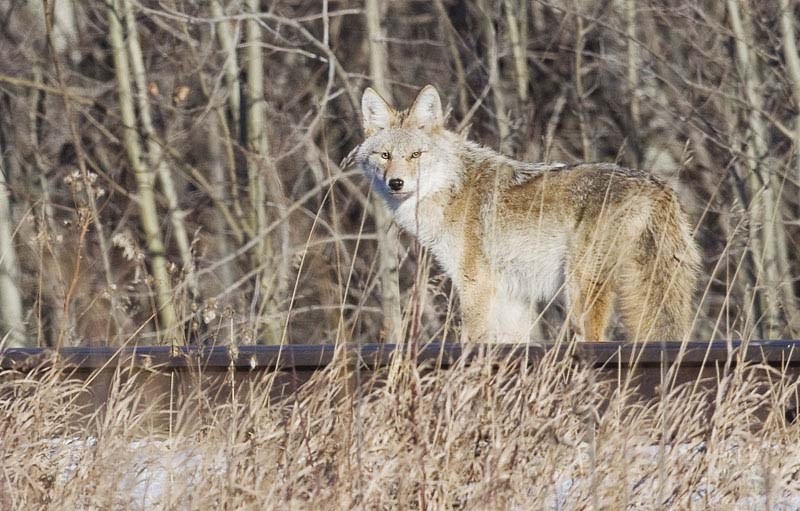Though she never saw them, Wanitta Ranson heard of a few coyotes passing through her Braeside neighbourhood in the past months.
The St. Albert resident is not the only one noticing the wild canines in the city. Community websites and blogs report on numerous sightings anywhere from Grandin to Heritage Lakes to Akinsdale.
The coyotes walk along the railway tracks, and live near the parks or the river. Some are spotted in driveways or passing through someone's backyard.
“There are lots of rabbits and that's probably why they come here,” she said, adding that she expects them to use the ravine between Sturgeon and Sir Winston Churchill roads to get around her neighbourhood.
Stu Fraser, supervisor with St. Albert's peace officer program, said only three sightings were reported to the city this year – in Deer Ridge, Grandin and Riel. He said municipal enforcement goes after them if they act threateningly, are injured or sick. But this year's sightings were nothing out of the ordinary.
Most coyotes are just passing through, he said. They look for food and shelter, and mostly live near the river valley – a well-known wildlife corridor that goes through the city.
“It's not unusual to have a fair bit of wildlife in the area because of the river valley and the proximity to the rural area around there,” he said.
“Of course we don't have anywhere near the number of sightings that Edmonton does. But Edmonton has its park rangers that are quite aware of it because it's a greater location and even greater river valley.”
Jim Mitchell, educator with the Alberta Trappers' Association, said many coyotes are born and bred in the city and adapted well to their habitat. They live in forested areas, parks and around golf courses where they sleep above ground unless they raise their young in a den.
They primarily feed on rabbits, mice and squirrels but are known to go after small pets such as cats, rabbits or dogs. Mitchell said they moved into the cities because humans expanded into their former habitat, but also because of an increased food supply – such as garbage, pet food, and fruit and berries from trees.
If people wanted the coyotes to leave, they should keep their yard clean and stop unintentionally feeding the animals. They should also remove lower branches from trees that can provide hiding places and keep an eye on their pet.
“There are excellent food sources in the city and people don't think about these things,” he said. “The animal is a product of its environment, the animal has to eat. So we shouldn't be providing it and then complain about it later.”
He added that if a coyote is not acting normal, walking up to a person without fear, or looks ill, people should yell, chase and throw things at it, and try to appear bigger.
Fraser said the city has a pest management policy in effect. If a coyote is deemed dangerous people should call the St. Albert detachment of the RCMP. A police or municipal enforcement officer will then go out and assess the animal and call in a wildlife management specialist or provincial wildlife officer to capture it and remove it from the city.
If the animal is not ill, injured or aggressive toward the public, the city will not take any action that would be harmful to the animal or its habitat, including den sites, he said.
Potentially dangerous coyotes within a residential area should be reported to 911 or the St. Albert detachment at 780-458-7700.




